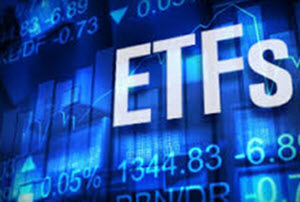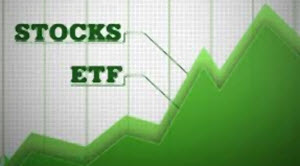
How can I buy Covered Call EFT shares?
For an individual, the easiest way to buy (and sell) Covered Call EFT shares is usually to open up an account with an online broker that offers this service. Once you have an account and has made a deposit, you can enter your buy order.
Always check the broker fees, because large broker commission and other fees can have a major impact. There are usually costs associated with both buying and selling Covered Call ETFs.
How often do Covered Call ETF’s pay money to its shareholders?
 This will vary, so always check the information provided by the Covered Call ETF that you are planning to invest in. It is common for a Covered Call ETF to pay money to its shareholders once a month – if there is a profit to pay out.
This will vary, so always check the information provided by the Covered Call ETF that you are planning to invest in. It is common for a Covered Call ETF to pay money to its shareholders once a month – if there is a profit to pay out.
For tax reasons, some Covered Call ETFs have a special payment to shareholders scheduled near the end of the year to pay out any surplus that they fund wants to pay out to shareholders rather than pay taxes on.
Do Covered Call ETFs always own stock?
No. Even though it is very common for Covered Call ETFs to own stock, it is by no means mandatory. The underlying for call options issued by the EFT can be almost anything, including bonds, metals, foreign currency, or commodities.
Should I borrow money to invest in ETFs?
No. I generally do not recommend that you borrow money to invest in ETFs. There might however be a few situations where it is a good idea to borrow money to invest in ETFs and other investments. The main situation where it can be a good idea to borrow money is when you have access to very cheap long term credit. Never ever use SMS loans or other types of expensive credits to borrow money to invest.
When can I trade my shares?
While regular mutual funds are priced only once a day (at market close), the shareholder of an ETF can trade shares throughout the day. This is one of the reasons why some investors prefer ETFs to regular mutual funds. The shares of an ETF can be bought and sold in a manner very similar to company shares. With most brokers, you can even make advanced orders, e.g. stoporders and limitorders.
 Before you launch yourself into frequent trading of ETF shares, be sure you know the costs associated with each purchase or sale. Typically, you will pay a commission to your broker for each trade. Even with a low commission, you can quickly reduce your investment’s overall performance buy carrying out frequent trades. People used to trading no-load mutual funds are especially at risk of being carried away, since they are used to being able to buy and sell without paying a commission.
Before you launch yourself into frequent trading of ETF shares, be sure you know the costs associated with each purchase or sale. Typically, you will pay a commission to your broker for each trade. Even with a low commission, you can quickly reduce your investment’s overall performance buy carrying out frequent trades. People used to trading no-load mutual funds are especially at risk of being carried away, since they are used to being able to buy and sell without paying a commission.
Last but not least, I would like to add a few words about liquidity. You can only go through with a sale if someone is willing to buy (and for a price that you are willing to sell for) and you can only go through with a purchase if there is someone willing to sell (and for a price that you are willing to pay). Even when EFT shares are listed on a big exchange, there is never any guarantee for finding a buyer or seller. So, even though the statement “you can trade in EFT shares throughout the entire trading day” may be true in theory, you might experience some difficulties with it in reality and it might take quite a while before your order goes through if the EFT is thinly traded. With a thinly traded ETF, there is usually a pretty big spread between bid and ask. Selling a large position (in relation to the average trading volume) can prove especially difficult.
Are Covered Call ETFs protected from volatility?
Covered Call ETFs are often hailed as a low volatility alternative, but they are far from impervious to volatility. It is true that many ETFs are based on a diverse portfolio of underlyings in order to spread risk, but this doesn’t make them 100% volatility-proof.
Generally speaking, a Covered Call ETF that tracks a large multi-industry index (e.g. the S&P 500) can be expected to be less volatile than a Covered Call ETF tracking a selected few companies all within a specific industry. Of course, the same goes for Covered Call ETFs where the underlyings are something else than stocks.
Many EFTs are tracking vanilla broad-market stock or bond indices such as Nasdaq 100, MSCI EAFE, iShares Barclays Aggregate Bond and the aforementioned S&P 500. During recent years, we have however seen an increased investor interest in EFTs with more concentrated and narrow portfolios of underlyings and these EFTs tend to be more susceptible to volatility.
This article was last updated on: February 13, 2016
